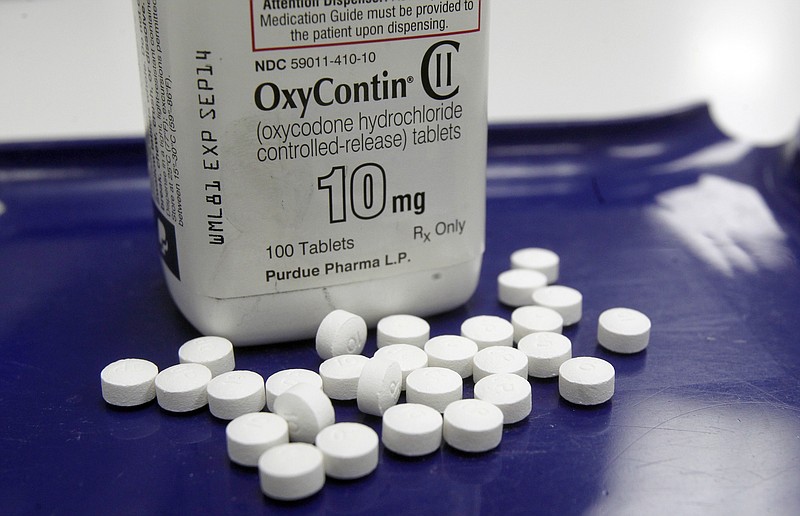Life expectancy in the United States is down for second year in a row as opioid crisis deepens.
Americans can now expect to live 78.6 years, a decrease of one-tenth of a year.
What's more, the new life expectancy drop marks the first time in a half century that there have been two consecutive years of shortened expectations. Our country last saw a side-by-side, two-years' decline in 1963, during the height of the tobacco epidemic and amid a wave of flu.
"We do occasionally see a one-year dip, even that doesn't happen that often, but two years in a row is quite striking," said Robert Anderson, the chief of the mortality statistics branch of the National Center for Health Statistics, told The Guardian.
Drug overdoses in 2016 killed 63,600 Americans, an increase of 21 percent over the record year before, according to the National Center for Health Statistics. The key driver, researchers say, is opioid addiction.
Anderson said preliminary data for overdoses in 2017 "doesn't look any better," and he added that more than two years of declining life expectancy hasn't happened "since the Spanish flu – 100 years ago." ... We would be entering that sort of territory, which is extremely concerning."
Opioid deaths just one number
1 — For each person who dies of an opioid overdose:18 — more have a substance use disorder involving heroin62 — more have a substance use disorder involving a prescription377 — more have misused prescription opioids in the past year2,946 — more have used opioids in the past yearSource: Centers for Disease Control and Prevention, 2015
This news is especially saddening as it comes just days after the Washington Post reported that DEA investigators, after two years of a painstaking probe into one of the nation's largest pharmaceutical distributors, felt it hit a brick wall in Washington when the Justice Department reached a milk-toast agreement with the company rather than prosecute officials there for failing to report outrageously suspicious orders of painkillers.
Instead of prosecution, McKesson Corporation will pay a $150 million fine and some sales will be suspended in four states.
It's not the first time. McKesson was accused of similar violations in 2008 and paid $13.25 million to settle that case.
McKesson said in a statement: "In the interest of moving beyond disagreements about whether McKesson was complying with the controlled substance regulations during the applicable period and to instead focus on the company's partnership with regulators and others to help stem the opioid epidemic in this country, the company agreed to settle with the DEA and DOJ."
The settlement isn't playing well with some in Washington - as well it shouldn't.
"One of the things we have to do is begin to hold the pharmaceutical companies accountable," said Sen. Maggie Hassan (D-N.H.), whose state suffers from the second-highest drug overdose rate in the nation. "Right now, when you see a fine for the McKesson company for a hundred-fifty million when they make a hundred million a week in profits, that isn't going do it."
The House Energy and Commerce Committee has begun an investigation into how drug distributors, including McKesson, sent 780 million pills over six years into West Virginia - 433 doses for every man, woman and child in the state.
Sen. Claire D. McCaskill (D-Mo.) has also launched an investigation into the role of drug distributors and manufacturers in the opioid epidemic.
And across the country, 41 state attorneys general - including Tennessee's - have banded together to sue the opioid industry. After all, it was state attorneys general who won a settlement against the tobacco industry for more than $200 billion in the 1990s.
It's a start. But that's what we thought of the DEA probes of pharmaceutical distributions, too.
Closer to home, there were more opioid prescriptions than people in Tennessee in 2015, and even in 2012, more people died of opioid overdoses in our state than in vehicle accidents, homicides or suicides. Between 2010-2015, opioid abuse claimed the lives of 6,039 Tennesseans. Then in 2016, Tennessee overdoses spiked another 12 percent, claiming at least 1,631 people.
Across the nation, widely available prescription painkillers have opened the gates for a new universe of legal and illegal opioid abuse beginning in about 1999. Deadly overdoses have increased each year since. As of 2015, more than half a million Americans had died from drug overdoses.
"What we're seeing now is the second wave of this epidemic," said Anna Lembke, a behavioral sciences professor at Stanford University and an addiction expert, told The Guardian. "The first wave started with physicians over-prescribing ... The second wave has translated into widespread, increased use of illicit opioids, of heroin, of fentanyl, of heroin laced with fentanyl. ... This is going to take a good 10 to 20 years to really turn around."
Sadly, there's not much help in sight.
Congressional leaders have often failed to do more than talk, despite convening commissions and producing white papers.
President Trump declared America's overdose epidemic a public health emergency, but little if any new funding materialized. Now the newest Republican proposals threaten to gut government health programs, such as Medicaid, that treat a disproportionate number of opioid addicts.
We must do better than this.
